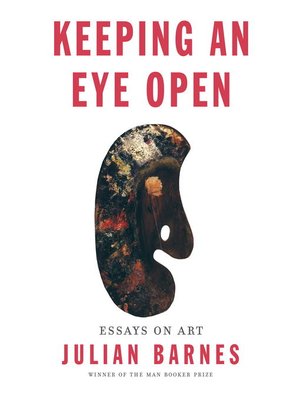
Sign up to save your library
With an OverDrive account, you can save your favorite libraries for at-a-glance information about availability. Find out more about OverDrive accounts.
Find this title in Libby, the library reading app by OverDrive.



Search for a digital library with this title
Title found at these libraries:
| Library Name | Distance |
|---|---|
| Loading... |
An extraordinary collection—hawk-eyed and understanding—from the Booker Prize-winning, bestselling author of The Sense of an Ending and Levels of Life.
As Julian Barnes explains: "Flaubert believed that...great paintings required no words of explanation. Braque thought the ideal state would be reached when we said nothing at all in front of a painting... But it is a rare picture which stuns, or argues, us into silence. And if one does, it is only a short time before we want to explain and understand the very silence into which we have been plunged." This is the exact dynamic that informs his new book. Barnes, in his 1989 novel A History of the World in 10 1/2 Chapters, had a chapter on Géricault's The Raft of the Medusa, and since then he has written about many great masters of nineteenth- and twentieth-century art, including Delacroix, Manet, Fantin-Latour, Cezanne, Degas, Redon, Bonnard, Vuillard, Vallotton, Braque, Magritte, Oldenburg, Howard Hodgkin and Lucian Freud. The seventeen essays gathered here are adroit, insightful and, above all, a true pleasure to read.
As Julian Barnes explains: "Flaubert believed that...great paintings required no words of explanation. Braque thought the ideal state would be reached when we said nothing at all in front of a painting... But it is a rare picture which stuns, or argues, us into silence. And if one does, it is only a short time before we want to explain and understand the very silence into which we have been plunged." This is the exact dynamic that informs his new book. Barnes, in his 1989 novel A History of the World in 10 1/2 Chapters, had a chapter on Géricault's The Raft of the Medusa, and since then he has written about many great masters of nineteenth- and twentieth-century art, including Delacroix, Manet, Fantin-Latour, Cezanne, Degas, Redon, Bonnard, Vuillard, Vallotton, Braque, Magritte, Oldenburg, Howard Hodgkin and Lucian Freud. The seventeen essays gathered here are adroit, insightful and, above all, a true pleasure to read.







